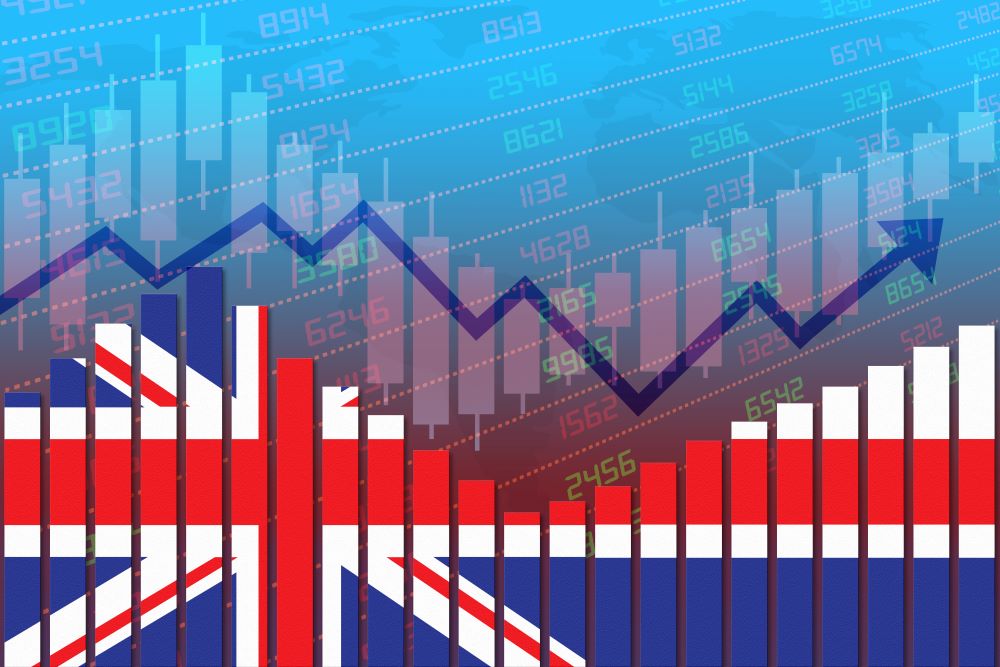
The UK government’s most recent monthly update of the UK’s trading data - which revealed a total amount of imports worth £892.7bn and exports worth £848.6bn – showed that the UK had a ‘trade deficit’ of £44bn at the end of September.
The term ‘deficit’ has negative connotations, often associated with government debt exceeding its income. For many in the UK, the term evokes the post-financial crisis era and rhetoric about the country needing to tighten its proverbial belt.
Media outlets track the trade deficit with worry, noting a widening gap between imports and exports with regular alarm.
But how worried should we be that the UK has a trade deficit?
Common complaints
A lot of the worries around trade deficits come from the belief that it is bad for a country if it imports more than it exports.
A related concern is that importing more goods or services suppresses demand for comparative domestic products, leading to job losses at home.
The World Economic Forum’s (WEF) Global Future Council on International Trade and Investment (GFCT) writes that this idea is embedded in trade deficit calculations, as it’s “common practice” to subtract the domestic content of imports and add the domestic content of exports to find the jobs gained and lost from trade.
This argument touches on the decline of manufacturing in advanced economies, with cheaper foreign goods blamed for the loss of factory jobs.
However, much research has been done to illustrate that increased international competition is only one of several causes.
US case study
Writing for WEF’s Forum Agenda, Simon Torkington explored the US as a commonly-cited example of this phenomenon, which, when examined more closely, revealed different trends.
The US is renowned for running a large decades-long trade deficit with China, due to the demand for cheap consumer goods.
Historically, this has been positioned as responsible for labour market shrinkage in the US ‘rust-belt’ of mid-Western states, something protectionist policies introduced under president Trump were designed to reverse.
However, as Torkington notes, citing a 2021 study from the Center for Strategic International Studies (CSIS), arguing that greater efficiencies in US manufacturing led to such a precipitous drop in the jobs available.
This was supported by GFTC-cited research noting that, of the manufacturing jobs decline of 5.5m between 1999 and 2011, only 1m could be attributed to China.
‘More nuanced and complicated picture’
Trevor Williams, co-founder of FXGuard and visiting professor at Derby University, says that unpicking the implications of trade balances presents a “more nuanced and complicated picture”.
He notes that commentators can become fixated on a single figure when, in reality, “there’s more than one set of balances: trade of goods, services, capital accounts and money flowing in and out for investment purposes”.
Returning to the US example, he notes “it’s run a huge deficit in goods trade, there are big current account deficits. However, it makes money from its investment abroad, which covers those deficits.”
Foreign investment flows and a preference for producing services, rather than goods, are the hallmarks of more sophisticated economies, which can then benefit from importing a wider variety of goods.
The same principle can be applied to the UK: “We sell our currencies to overseas markets, we sell our ability to buy homes, to buy properties, which make it possible for us to fund the deficit that we have.”
Sticking with the UK, Williams says it should be remembered that “just because the balance of trade is in deficit, it doesn’t mean we have a deficit across all trade”.
While the UK runs an overall trade deficit, there are still surpluses across sectors such as medical manufacturing, pharmaceuticals and aerospace.
Understanding where the balance of trade sits within the overall trade position is vital to understanding the full picture.
Surpluses aren’t all good
Conversely, Williams also notes that being in a trade surplus isn’t inherently good, in much the same way trade deficits aren’t inherently bad. He says that “ultimately, any kind of extreme position creates vulnerabilities”, adding that:
“There are certainly benefits to having a trade surplus, obviously it would be nice to have plenty of money to spend. It also means you’re outperforming everyone else.”
“However, it also presents challenges: how do you spend the money without it leading to rising inflation? How do you avoid frittering it away?”
Williams points to Norway as an example of a country which has created additional value from a trade surplus, rather than damaging fiscal consequences. Noting the wealth fund Norway created from its substantial energy exports, he says:
“Essentially, it’s putting money away for future generations, creating investments at home and abroad.”



